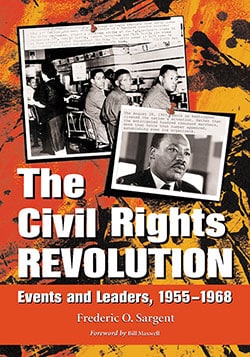Subtotal: $39.95
The Civil Rights Revolution
Events and Leaders, 1955–1968
$49.95
In stock
About the Book
From the Supreme Court’s decision of Brown v. Board of Education in 1955 to the assassination of Dr. Martin Luther King, Jr., in 1968—African American students, lawyers, ministers and communities conducted a successful nonviolent campaign against the system of American apartheid in eleven states.
This work is organized into four sections. The first describes apartheid in the U.S. before Brown v. Board of Education. The causes of the revolution—the enforcement of apartheid laws by state governments, courts, police, and the KKK—are also analyzed. The second presents 54 confrontations in the struggle for Civil Rights—including court cases, boycotts, sit-ins, marches, demonstrations, and the desegregation of cities and schools—from the Moton High student strike (in Farmville, Virginia) in 1951 to 1969’s hospital workers’ strike in Charleston. The third is a series of 60 biographical profiles of leaders giving their educational and civil rights achievements. This section also includes a list of 40 historically significant activist organizations. The fourth section discusses six important Civil Rights laws and concludes with the general accomplishments of the struggle.
About the Author(s)
Bibliographic Details
Frederic O. Sargent
Foreword by Bill Maxwell
Format: softcover (7 x 10)
Pages: 204
Bibliographic Info: bibliography, index
Copyright Date: 2004
pISBN: 978-0-7864-1914-2
eISBN: 978-0-7864-8422-5
Imprint: McFarland
Table of Contents
Table of Contents
Acknowledgments vii
Foreword xv
Preface 1
Part I: Prelude to Revolution 3
Part II: Nonviolent Activists v. the Establishment 13
Part III: Leaders of the Revolution 133
Part IV: Accomplishments 173
Conclusion 179
Bibliography 181
Index 185

 A Journal of the English Civil War
A Journal of the English Civil War 




